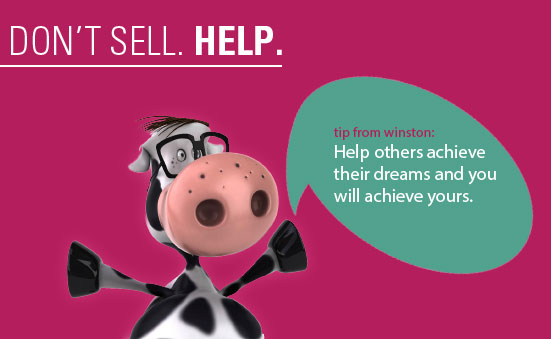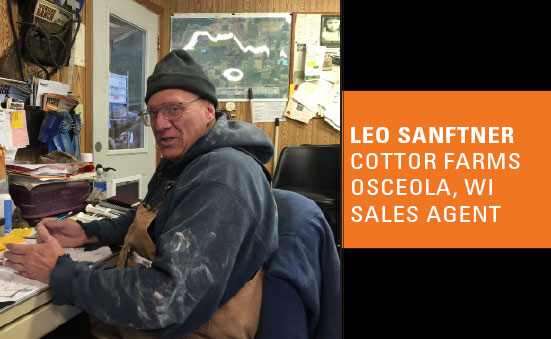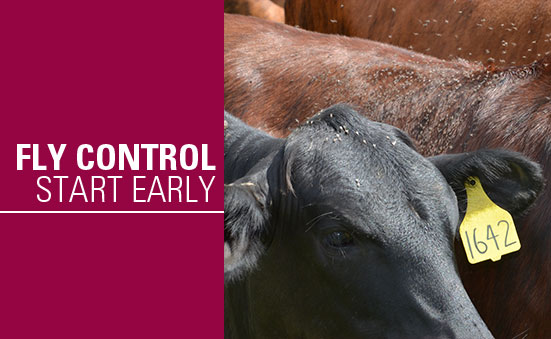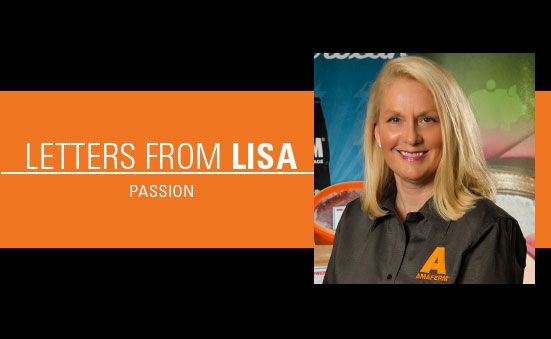On an average day, Leo Sanftner will drive to his job at Cottor Farms in northern Wisconsin drinking a Mountain Dew and catching up on phone calls. Once in the office, he’ll oversee the mill’s manufacturing process and prescribe customized diets for his customers’ livestock operations. The rations Sanftner mixes are for species including cattle, horses, goats, sheep, hogs, rabbits and chickens.
In afternoons and evenings he’ll make product deliveries. Some customers are 30-40 miles away, but through his personal show ring connections, Sanftner also delivers orders up to 200 miles away from the mill’s home base in Osceola, Wisconsin.
His passion for helping breeders do well is second to none. Every day, Sanftner says he listens to his customers to learn about their unique situations. He asks them to share specifics so he can help find the right information and formulate a ration. Sanftner says he wants customers to trust him to treat their animals like his own and realize they can call on him whenever the need arises; daytime, nights or weekends.
His days are long and his to-do list is lengthy, but he doesn’t mind one bit. He says he’s living his dream of helping breeders improve the health of their operations through his position at Cottor Farms.
Cottor Farms is a family-owned business, owned by brothers, Rick and Dan Cottor, that raises its own crops to put through the milling process. Sanftner has known the Cottor family for two decades and was brought on as a sales agent six years ago, thanks to his show ring and livestock connections. He credits his success in both his work and in the show ring to BioZyme® products.
Cottor Farms also supplies and grinds 90-percent of the feed for a nearby mill, and Sanftner says he makes sure to include Amaferm® in all of the mixes.
Prior to joining Cottor Farms, Sanftner was familiar with the Sure Champ® brand as he experienced the impact of this supplement when he purchased cattle from Star Lake Herefords in Skiatook, Oklahoma, years ago. He knew the product worked on cattle and kept it as a part of his own feeding program.
“People have high quality animals, but they may not bloom and take off,” he says. “BioZyme products are formulated in the diet for them. For example, Digest More® will take calves that have been really slow to develop and give them what they need to take off. If they have a good start it’s unbelievable how they eat at the bunk. I’m amazed when I see them a few months later.”
Sanftner can share numerous success stories of his customers using Digest More and Vita Charge®, specifically. One customer who raises chickens for ethnic groups wants his hens to have all black shiny feathers. Sanftner recommended adding Amaferm to their diet. Not only do the chickens now have the desired physical traits, but their eggs are harder with stronger yolks.
He also says the farm has not had problems with chickens that stop laying nor any molt season issues in the past year.
When a new customer discusses an issue with Sanftner, one of the first products he recommends is Vita Charge gel. He says he’ll give them a tube to try, and it will always trigger more business.
“We have some small farmers that the minute their pigs and calves are born they give them Vita Charge even before colostrum,” he says. “I’m overwhelmed with the success of the product and how it works for everything I put it in.”
Another testimonial Sanftner shares about the effects of Vita Charge is from a family with show hogs that last year developed a staph infection. Among other treatments, he encouraged the use of Amaferm through the products Digest More and Vita Charge. Sanftner believes these products saved one out of their four show pigs.
Sanftner says the products are not a hard sell because once the breeder has experienced Amaferm in their diet, they see improvement in overall herd health. His customers’ bragging points include enhanced immune systems and minimal issues with sickness.
“They feel like their animals are getting the best quality,” he says. “The first thing customers might ask is ‘How much more will it cost me,’ but we add it into the whole diet and it all comes out as price at the end.”
On a personal note, Sanftner and his son T.J., raise Hereford and Red Angus cattle. They are active in the show ring and proudly pass their love for showing to Sanftner’s granddaughter, Racthel. As the fourth generation of Sanftners to show cattle, Racthel, has seen show ring success that Sanftner credits to Sure Champ and Digest More. She showed the Reserve Grand Cow-calf Pair at the Minnesota State Fair last year, and his son exhibited the Reserve Grand Get-of-Sire.
Sanftner’s passion for livestock, people and BioZyme is a package deal. By visiting with various breeders, he can learn how the animals are doing on the products and tailor to their needs. “I treat all animals as if they’re a champion,” he says. “Like they’re my own family and not just a number on the wall. It’s just how I do business. I hope to give them a good protocol with the right products then step back and let it work.”










